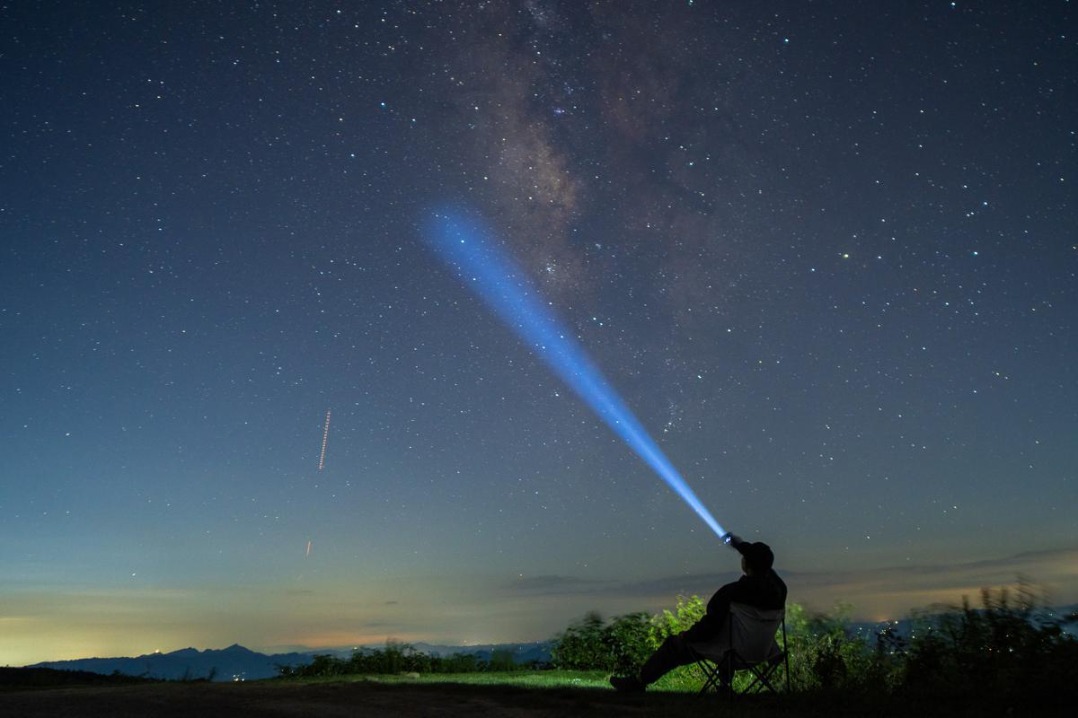Scientists use moonquakes to map safe lunar landing sites in future

The moon is not a dead desert, as its surface and interior remain active, according to new research from Sun Yat-sen University in Guangzhou, Guangdong province.
Scientists at the university, through satellite image analysis, discovered that dozens of new landslides have formed on the moon since 2009. The main driving force behind the landslides is not asteroid impacts, but rather quakes originating from the moon's interior — what scientists call endogenic moonquakes.
The research team, led by Xiao Zhiyong of the School of Atmospheric Sciences, in collaboration with Zhang Wuming, a professor at the School of Geospatial Engineering and Science, published their findings in the journal National Science Review.
The study represents a significant advancement in lunar thermal evolution research and provides crucial references for site selection and safety protection in future human lunar landings and base construction.
"To identify new landslides on the moon, we employed the method of satellite image comparison; and using data with a resolution of less than 1 meter per pixel, we compared earlier and later image data covering the same areas, and found that a large number of new landslides have formed on the moon since 2009," Zhang said.
The team selected 74 observation areas on both the near and far sides of the moon that are prone to landslides. These include steep crater walls of young impact craters, wrinkle ridges formed by fault activities, and irregular lunar mare patches where recent volcanic activity may exist.
By aligning the image data and calculating albedo changes, the researchers identified the locations and morphologies of the landslides. To avoid misjudgment, they controlled the lighting conditions of the images and used the lunar digital elevation model to measure slope gradients.
Unlike large-scale landslides on Earth, the new lunar landslides are small and shallow, with most measuring less than 1 kilometer in length, less than 100 meters in width and less than 1 meter deep at their thickest point.
"In terms of scale, the volume of material displaced by each landslide is less than 100,000 cubic meters, and they are mainly concentrated on slopes with an incline of 24 to 42 degrees," Zhang said.
The small and shallow nature of the landslides means they pose a relatively low overall risk to future lunar exploration. However, Zhang said protective measures are still needed if lunar landing equipment is built near slopes adjacent to landslide sites.
Xiao's team also discovered newly formed impact craters, the largest with a diameter exceeding 70 meters, while analyzing the geological conditions of the landslides. Fewer than 30 percent of the new landslides may have been triggered by impacts, and the starting positions generally lacked exposed rocks.
"Therefore, scientists infer that these landslides are mainly caused by vibrations from endogenic moonquakes, confirming that there are still energy activities inside the moon," Xiao said.
The landslides driven by endogenic moonquakes are mainly concentrated in the eastern region of the Mare Imbrium basin, where shallow moonquakes were also recorded during past Apollo missions, Xiao said.
"This implies that the eastern Mare Imbrium basin may be the current seismically active area of the moon," he said. "If a long-term lunar base is to be established in the future, we should avoid such seismically active areas and choose more stable locations."
Previously, it was difficult for humans to directly detect seismic zones inside the moon. The study shows that the distribution of lunar landslides can serve as a guide to help researchers indirectly locate active subsurface seismic areas, providing direction for the deployment of lunar seismometers and further study of the moon's internal structure, he said.
- Scientists use moonquakes to map safe lunar landing sites in future
- One failed course will no longer bar postgrad path
- Chinese dredging project team grows bok choy on coral sand in Maldives
- GeSI, Tencent to launch UN platform at COP30 climate meeting
- PKU to remove GPA in students' evaluation reform
- Beijing rocket firm sets record for thrust





































